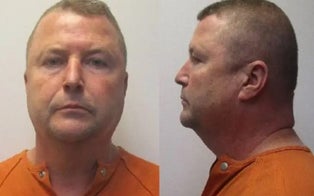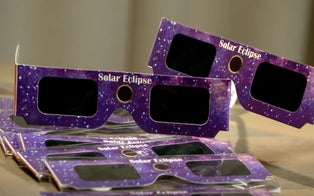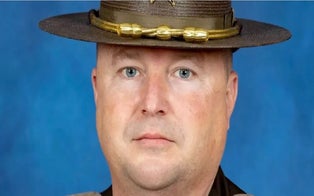It's estimated that one in eight Americans are afraid of going to the dentist. The prospect of being strapped down before a procedure probably doesn't help either. One group of parents is saying that this, and more, happened when they took their childr
For some kids a trip to the dentist can be a traumatic experience. But just imagine what it might be like strapped into a cocoon-like restraining device called a papoose board that is sometimes used to immobilize children at the dentist's office.
They're smiling today, but eight children say they were strapped into a papoose board while visiting the same dentist for routine work.
They're all patients of Dr. Edward Dove. Dr. Dove has a huge pediatric dentistry practice in Southern California and his commercials are specifically targeted to kids like a friendly Saturday cartoon show. But these kids' parents say their experience was nothing to smile about.
"He hit me on the head and said, ‘You better shut your mouth,' four-year-old Abigail Webb told INSIDE EDITION's Chief Investigative Correspondent Lisa Guerrero.
"He strapped me down on a papoose board and I started crying and he kept slapping my cheeks," said six-year-old Tyler Catalfamo, another patient of Dr. Dove.
Dr. Dove says he uses the papoose board properly, after sedating the youngsters.
"I do not hit anybody, I do not punch anybody, it's all bogus," Dr. Dove previously told KBAK News in Bakersfield, CA.
The papoose board is a controversial device. Some pediatric dentists use it, but others refuse to except in special circumstances.
But it's what allegedly happened to these kids after being papoosed that also has their parents in an uproar.
"He strapped me down and put tape on my mouth and told me to shut up," said five-year-old Rogan Cook.
In Dr. Dove's case, the parents of these children all found each other after Rogan's father, Chris Cook, started a Facebook page called, ‘Stop Edward Dove DDS of California.' Four hundred people joined the group.
Cook and the parents of the eight kids have all filed complaints with either the police or the California Dental Board.
The parents even organized protests outside Dr. Dove's office.
Dr. Michael Davis of Santa Fe, New Mexico, says he never uses a papoose board. But demonstrated how it works on kids whose parents gave their permission to be strapped in.
Dr. Davis told INSIDE EDITION, "They are put into basically a baby straitjacket. It's just unconscionable. I believe this tool should only be used in very rare situations. It's not to be used for routine dental work."
The American Academy of Pediatric Dentists approves the use of the papoose and other stabilization devices in certain situations to protect the patient and dentist, but cautions that it has: "the potential to produce serious consequences, such as physical or psychological harm…"
We tried to speak with Dr. Dove but he refused to comment. He has denied all of the allegations against him and says he loves to work with kids but the toughest part of the job is dealing with the parents.
"We're being bullied, we're being harassed that's all it is," Dr. Dove previously commented.
Dr. Dove says every parent signed a consent form that states a papoose may be used and that they were also aware of the treatment he was going to provide. There are no disciplinary actions pending against him and he has not been charged with any crime.
But the parents point to photos they say they took after leaving Dr. Dove's office as evidence of what their kids suffered. One photo shows a young boy with scrapes and lacerations on his face.
Other pictures show what Kristina Gonzalez says are red marks the papoose straps left on the wrist of her seven-year-old daughter Clarissa Gonzalez. Clarissa is brought to tears just thinking about it.
"We learned a bad lesson, but were hoping our lesson can prevent this from happening to other children," said mom Brooke Catalfamo.
Dr. Dove says he is installing video cameras in his examining rooms to protect himself from unfounded allegations.
In connection with our report, the American Academy of Pediatric Dentistry (AAPD) provided us with the following statement:
The American Academy of Pediatric Dentistry (AAPD) recognizes that in providing oral health care for infants, children, adolescents and persons with special health care needs, a range of behavior guidance techniques may be used by dental health care providers. Behavior guidance is a continuum of interaction involving the dentist and dental team, the patient and the parent directed toward communication and education. Its goal is to ease fear and anxiety while promoting an understanding of the need for good oral health and the process by which that is achieved.
Protective stabilization is used when other behavior management techniques are ineffective, such as during emergencies, in the case of a child with special health care needs, or when a child cannot cooperate for treatment. Protective stabilization should only be used when absolutely necessary, in the shortest amount of time possible, to protect the child, the oral health professional and other dental office staff during oral health procedures, and should not cause physical injury or discomfort. The objectives of protective stabilization are to:
- Reduce or eliminate sudden, uncontrolled or aggressive movement of the child’s head, jaw, body or appendages
- Provide stability for the child in the dental chair
- Protect the child and oral health staff from injury
- Facilitate delivery of quality oral health procedures
For more information, please access AAPD’s Guideline on Behavior Guidance for the Pediatric Dental Patient: http://www.aapd.org/media/Policies_Guidelines/G_BehavGuide.pdf






